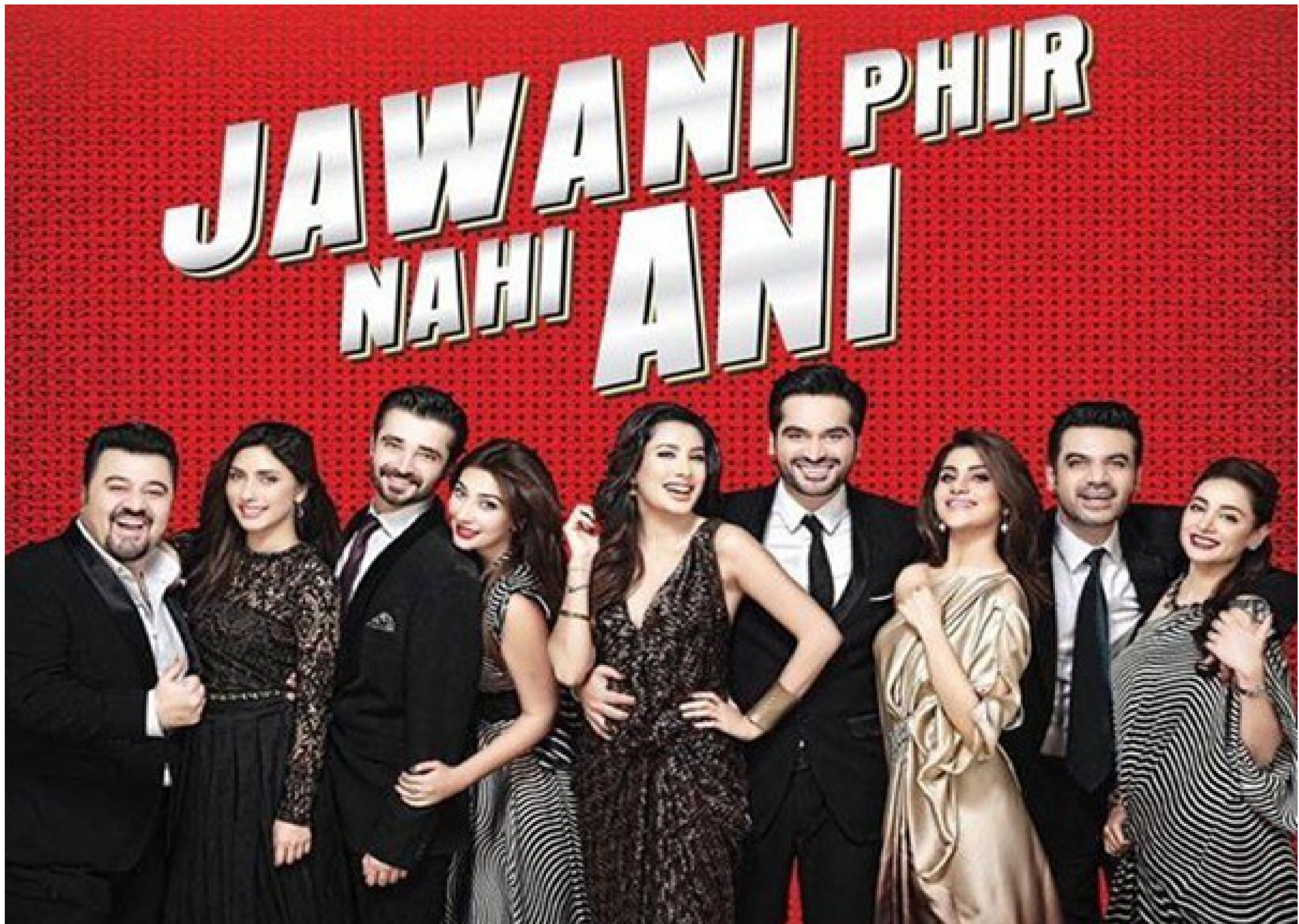Pakistani Cinema In 2015: Stage Set For Revival
Jawani Phir Nahi Ani: a hit

NEW DELHI: Over the years, Pakistan’s once flourishing film industry has been terrorised into submission. Since 2009, when a spate of Taliban-led attacks on cinemas and movie halls led to a decline in the number of films produced, the industry has struggled to revive itself. 2010 was in fact the lowest point of the industry during which only seven movies were produced, six of which were major “flops.”
However, in the last few years, a small number of films that have been well received have prodded the question: Is Pakistan’s film industry set for revival?
2015 saw some big films, including Manto’ a biographical drama film based on the life of Pakistani short-story writer Sadat Hassan Manto, starring and directed by Sarmad Sultan Khoosat in the title role, and billed as Pakistan’s first biopic.
Other films include Dekh Magar Pyaar Say, Moor and Shah -- all released on Pakistan’s Independence Day, and Bin Roye and Wrong No. released on Eid.
The year’s biggest success, however, was Jawani Phir Nahi Ani an adventure comedy film directed by Nadeem Baig and co-produced by Humayun Saeed. Jawani Phir Nahi Ani became the biggest opening of all time in Pakistan as it was released on 80 screens, going on to be a huge success by Pakistan’s standards as it grossed over ? 470 million, eventually becoming the highest-grossing Pakistani film worldwide, adjusted for inflation, beating out Choorian that had held the record for more than a decade.
Although behind Jawani Phir Nahi Ani in terms of box office returns, Pakistani films fared quite well overall in 2015, with Wrong. No taking in ?15.0 crore, Bin Roye grossing ?10.85 crore, and Karachi Se Lahore making ?10.0 crore. Under the ten crore mark were Jalaibee with Rs. 7.1 crore, 3 Bahadur at Rs 6.63 crore, Manto grossing Rs. 5.03 crore, Dekh Magar Pyaar Say at Rs. 2.24 crore, and Moor making Rs. 1.85 crore.
2015 also saw the release of Bahadur -- the first Urdu 3D computer animated film. You can watch Bahadur here:
The “revival” of Pakistan’s film industry has been set in motion by the preceding years. In 2013, Zinda Bhaag was chosen as the country’s first entry in 50 years in the foreign film category at the Oscars’, reflecting the growing confidence of an industry that has only produced only a few films in the last few years.
The stage for revival was set in 2012 when Sharmeen Obaid Chenoy’s Saving Face, about victims of acid attacks in Pakistan, won Pakistan its first Academy Award in the short documentary category. Talk of “revival” and “resurgence” is a throwback to the flourishing film industry of the 1960s and 70s, with films like Bombay-wallah, Shaheed, Armaan, Umrao Jaan Ada and Aina being oft-mentioned. The decline of the industry was set in the 1980s, as General Zia ul-Haq’s regime’s censorship of films saw a decrease in the number of movies being produced in “Lollywood,” the informal name for Pakistan’s Lahore based film industry.
While many blame competition from the Indian film industry as one of the reasons for the decline, Indian films may have had an essential role to play in this recent “revival” and “resurgence.” As the ban on Indian films was relaxed in 2006, the newly available Bollywood productions drew such an overwhelming response from the Pakistani audience that cinema halls proliferated to meet the demand. This has created a film culture in Pakistan, leading to an audience that is not just more receptive to but is demanding an indigenous film indusry.
2013 was witness to the release of 20 Pakistani films and Zinda Bhaag is a befitting choice to represent Pakistani cinema at the international stage; it is a film that plays a tribute to Lahore and 1970s Lollywood. There is an Indian connection to the film, with post production being completed in India. Zinda Bhaag follows other indigenous successes, such as Waar which is the highest grossing Pakistani film till date, and deals with the controversial subject of militancy and terrorism.
Bol was another recent film that did well, becoming the first Pakistani film to do $1m in business at the box office. Like most of the other films being produced in Pakistan in the last two years, Bol deals with sensitive subject matter - that of a zealously religious father who murders his only son, a member of Pakistan’s transgender community.
Film is a powerful insight into the social-cultural fabric of its times. But whether the resurgence of Pakistan’s film industry complemented by the willingness of the audience to engage with controversial subjects such as militancy (in Waar), religious tolerance (Mein Hoon Shahid Afridi), social justice (Josh and Lamha), articulate the mood of a society that is ready to begin the journey toward transition, it may be too soon to say, especially given the fact that violent attacks on cinemas continue, such as the a brutal attack on a cinema in Peshawar in February last year that killed 14 people and injured dozens of others.
2015, however, is perhaps the most encouraging year yet for Pakistani cinema since 2002, and a very positive indication of things still to come…



